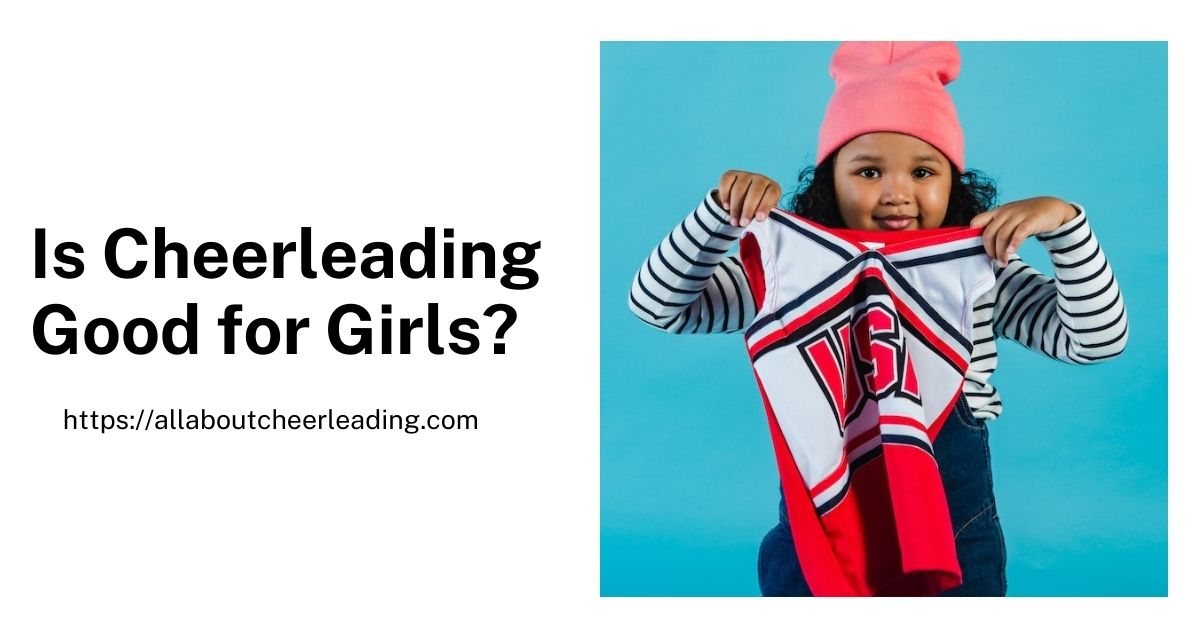Is cheerleading good for girls? It’s a question often posed by parents, educators, and even young girls themselves. As the debate surrounding the merits and challenges of cheerleading continues, it’s essential to understand its multifaceted impact on girls’ physical, emotional, and social development. In this in-depth article, we’ll unpack the benefits and delve into considerations, providing a comprehensive understanding of the sport’s role in shaping young women’s lives.
Physical Benefits: Strength, Flexibility, and Endurance
When one considers the physical benefits, the answer to “Is cheerleading good for girls?” becomes clearer. Regular practices hone muscular strength, increase flexibility, and build endurance. A study from the American Academy of Pediatrics highlighted that cheerleading offers an equivalent level of physical workout as many traditional sports.
Muscular Strength
Engaging in the dynamic world of cheerleading, participants frequently find themselves lifting teammates, executing high jumps, and performing a series of acrobatic maneuvers. These physically demanding activities target and fortify a range of muscle groups, from the core to the extremities. Such rigorous training not only amplifies their athletic prowess, making them comparable to athletes in traditional sports, but also has broader implications for their holistic well-being. According to The Journal of Strength and Conditioning Research, consistent muscle strengthening can lead to long-term health benefits, underscoring the advantageous side of cheerleading’s physical demands.
Flexibility and Balance
Regular stretches, intricately woven into cheerleading routines, have endowed these athletes with remarkable flexibility. This limberness isn’t just for show; it plays a direct role in enhancing their balance, a synergy crucial for their performance. Enhanced balance is more than just about perfecting routines; it’s a foundational element in injury prevention across a spectrum of sports. As pointed out by sports health research, the convergence of flexibility and balance is a cardinal component, elevating the safety and efficiency of athletes in their respective disciplines.
Endurance
Endurance doesn’t manifest overnight; it’s a product of dedication and time. Through their rigorous and consistent training regimens, cheerleaders progressively cultivate the stamina indispensable for executing prolonged routines and facing the challenges of high-stakes competitions. This sustained energy is not merely about physical strength; it’s about mental fortitude and the ability to maintain peak performance even when fatigue sets in. As affirmed by sports physiology research, endurance, both mental and physical, plays a pivotal role in an athlete’s overall success and resilience.
Emotional and Psychological Benefits
Building Confidence
Stepping onto a stage or a field, cheerleaders bravely face vast audiences, pushing past nerves and self-doubt. Each time they master a challenging move or nail a complex routine, their self-belief soars. Not only does cheerleading challenge them to continuously improve, but being an integral part of a supportive team reinforces a strong sense of self-worth. As highlighted by youth development studies, such experiences in formative years play a pivotal role in molding a confident, assertive personality, enabling young individuals to approach life’s challenges with a positive mindset.
Handling Pressure
When cheerleaders step onto the competition floor, especially in high-stake environments, they encounter a whirlwind of emotions, from excitement to sheer nervousness. Yet, amidst this storm, they learn to anchor themselves, drawing on internal resources to manage the immense pressure. By consistently being in such demanding situations, cheerleaders cultivate valuable skills like resilience, problem-solving under stress, and adaptability. These attributes, while honed on the mat, aren’t confined there. They seamlessly transfer, aiding individuals in tackling life’s challenges with similar grace and grit, as highlighted by educational psychologists who study youth development.
Developing Discipline and Commitment
Being a part of a cheerleading team isn’t just about executing moves; it’s a journey that teaches invaluable life lessons. To perfect a routine, cheerleaders have to practice regularly, showcasing a commitment akin to mastering any intricate skill. Abiding by the team’s guidelines and dedicating oneself to the choreographed sequences instills a level of discipline that is commendable. This consistent effort not only shapes them into better performers but also prepares them for challenges in life, reinforcing the importance of perseverance and dedication. As highlighted by educational experts, such discipline acquired from extracurricular activities can positively influence academic and personal growth.
Social Benefits: Teamwork and Lifelong Bonds
The Essence of Teamwork
Is cheerleading good for girls in terms of social development? Absolutely. It promotes teamwork, as every member plays a pivotal role in a routine’s success. Research from the Positive Coaching Alliance suggests that team sports, including cheerleading, instill collaborative skills in participants.
Building Lifelong Bonds
Many cheerleaders form lasting friendships with their teammates. The shared experiences, challenges, and triumphs forge bonds that often last a lifetime. Striving to secure a spot on the cheer squad? Dive into our guide on how to make the cheer team for insider tips and proven strategies to stand out!
Considerations and Precautions
While the benefits are substantial, it’s also crucial to address the concerns associated with cheerleading.
Risk of Injuries
Like any sport, cheerleading has its risks. Proper training, safety measures, and qualified coaching can minimize these risks. Parents should ensure their child’s team adheres to safety guidelines set by organizations like the American Association of Cheerleading Coaches and Administrators (AACCA).
Balancing Academics and Sport
Striking a balance between academics and intensive training can be challenging. However, with good time management and supportive environments, many cheerleaders excel in both.
Financial Considerations
Competitive cheerleading can be expensive. Uniforms, travel for competitions, and training fees add up. It’s essential to be aware of these costs and explore options, like fundraising or sponsorships, to alleviate financial strains. Discover our 25 ways to save money on cheerleading expenses and implement savvy savings without sacrificing quality!
Conclusion
So, is cheerleading good for girls? The multitude of physical, emotional, and social benefits suggest a resounding “yes.” However, like any activity, it’s vital to approach cheerleading with awareness and ensure a safe, supportive environment for young participants. With the right balance and approach, cheerleading can be a transformative experience, equipping girls with skills and memories that last a lifetime.

